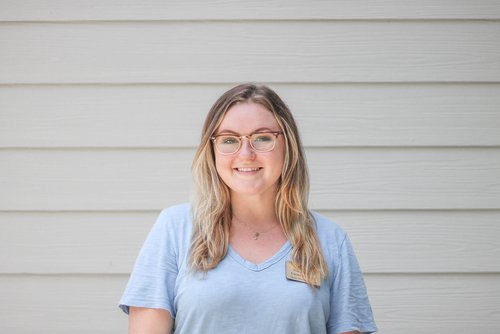When a young child is greeted with your appreciative gesture of saying “Thank you”, they will most likely reply with, “You’re welcome” because they have heard it relayed time and time again by their surrounding adults and peers. In actuality, how long does it take in a child’s development to realize the building blocks of their reply? “You. Are. Welcome.” The shortened response is a script, or a gestalt, being an organized whole different from the summation of its parts (Merriam-Webster). The building blocks of language consist of single words, but for gestalt language processors, chunks of words are used instead. As stated before, many young children use these chunks in communication, as gestalt language processing is a normal part of human language development. However, this is seen more frequently in later years in children with Autism Spectrum Disorder (ASD) (Konyn, 2022).
Social communication with a focus in speech and language impairment is the one criterion of diagnosis in those with ASD (American Psychiatric Association, 2013) that has not changed since Dr. Leo Kanner first created the description of infantile autism in 1943 (Lim, H. A., 2010). Over the years, researchers have suggested that the capacity for pattern perception and production based on the “Gestalt style of language acquisition” has greatly influenced the language development of children with ASD (Prizant, 1987; Prizant et al., 1997). With these deficits in social communication, therapists have long searched for a form of treatment to bypass the gestalt form of language processing to a more analytic form of language processing. From a study conducted in 2010 by Hayoung A. Lim, PhD, MT-BC, NMT, both music therapy and speech therapy share nearly equal benefits when it comes to addressing a child’s language processing and verbal production.
The results of Dr. Lim’s study (2010) showed that the improvements in language processing brought on by music therapy versus speech therapy were not significant, meaning that the findings of both therapies showed similar outcomes. After being scored on the Verbal Production Evaluation Scale (VPES), 50 participants diagnosed with ASD aged 3-5 were separated into three groups: speech training, music training, and no training. After 3 days of training, the VPES posttest was administered, and it was shown that the speech and music training groups had great effects on speech production compared to the no training group. Although Dr. Hayoung listed the difference between music therapy and speech therapy, her study showed that those with music training had a 12.14 point advantage over those who were assigned speech training. A reason for this advantage towards music is a music therapy technique called developmental speech and language training through music (DSLM) that uses rhythmic cueing and pausing in order to facilitate speech through emphasizing target words. Dr. Lim explained another possible reason for the advantage of music in her earlier published article from the Music Therapy Perspectives journal (2009), stating that children with ASD are able to identify and reproduce rhythmic and melodic patterns. Through using these available strengths, music can facilitate speech and language development through DSLM, or developmental speech and language training through music.
The following case study demonstrates the effect of rhythmic emphasis on language in practice:
Patient O is an individual with ASD and is a Gestalt Language Processor receiving music therapy treatment. O has a tendency to break into long periods that he scripts that sometimes have social implications. This is seen for instance, when we sing our goodbye song. After singing, he shows the behavior of scripting, using large chunks of unanalyzed and unorganized language for around 30 seconds, listing different ways to say goodbye. To address his gestalt scripting, we used boom whackers (colored tubes that emit different notes when struck) to separate each syllable in conversational sentences. Prior to the intervention, O took 10 to 15 seconds to commit to an activity, but with the rhythmic cueing offered by the boom whackers and the music therapy intern, he was able to attain his focus and direct his attention solely to the cues, the pitches of the instruments, and the individual parts of the sentences. He was able to read 4 different sentences within 20 seconds, greatly reducing the time that O spent scripting.
-Jackson Arnold, Music Therapy Internn
Works Cited
Konyn, L. (2022, February 8). Gestalt language processing and AAC. AssistiveWare. Retrieved August 22, 2022, from https://www.assistiveware.com/blog/gestalt-language-processing-aac
Lim, H. A. (2010). Effect of "developmental speech and language training through music" on speech production in children with autism spectrum disorders. Journal of Music Therapy, 47(1), 2–26. https://doi.org/10.1093/jmt/47.1.2
Lim, H. A. (2009). Use of music to improve speech production in children with autism spectrum disorders: Theoretical orientation. Music Therapy Perspectives, 27(2), 103–114. https://doi.org/10.1093/mtp/27.2.103
Merriam-Webster. (n.d.). Gestalt. In Merriam-Webster.com dictionary. Retrieved August 22, 2022, from https://www.merriam-webster.com/dictionary/gestalt
Prizant, B. M., 8chuler, A. L., Wetherby, A. M., & Rydell, P. (1997). Enhancing language and communication development: Language approaches. In D. Cohen & F. Volkmar (Eds.), Handbook of autism and pervasive developmental disorders (pp. 572-605). New York: John Wiley & Sons, Inc.
Prizant, B. M. (1987). Clinical implications of echolalic behavior in autism. In T. Layton (Ed.), Language and treatment of autistic and developmentally disordered children. Springfield, IL: Charles Thomas.






